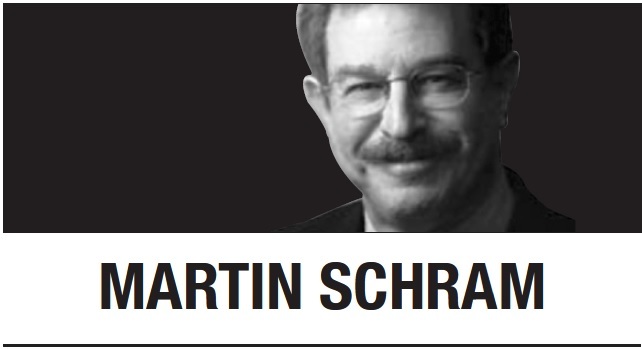
Summertime, and the livin’ ain’t easy.
News screens keep showin’
How people die.
We look away, ’cause we know what we’re seein’.
Our pain’s not just knowin’ --
It’s knowin’ why.
Newsbreak: Our worst nightmares are being splashed across our news screens, one after another. Unfortunately, the tragedies seem way too familiar -- because today’s tragic news reads like pages ripped right out of warning memos in which government experts pleaded with officials to act urgently to save us. But no, too often our elected officials did nothing, except look the other way and make another speech. And what hurts is we know why: They didn’t have the guts to just say no to petty politics -- and act courageously to save the people who trusted and elected them.
Now our nightmares are our breaking news: Catastrophic heat kills hundreds in the sweltering Pacific Northwest. Collapsing condo kills many; warnings were ignored. Collapsing infrastructure may be next; US Congress dithers as aged bridges and tunnels deteriorate.
Click.
No, wait. We owe it to ourselves -- and those who were just killed -- to look for the news behind the news. To name and shame those who are at least partly to blame for today’s breaking news nightmares.
We can start by checking out the warnings in the handbook of a 2014 White House Climate Change Adaption Planning Workshop, one of a series of events where regional officials heard experts’ warnings and how to prevent, or at least prepare for, future disasters. I was looking at a warning map on page 12 -- it shows a mostly beige America, but with Washington state, Oregon and California in a menacing dark red (because rapid temperature increases had already created new “frost-free” zones). And when I looked over at my news screen, I saw a cable news map that looked virtually identical, because record heat (46 degrees Celsius in Portland) had killed hundreds in the Northwest.
As I read that 2014 expert handbook, it seemed to be explaining what we were seeing on our news screens this week. It detailed dangerous climate changes that had already happened.
Then it warned us of far worse crises that were likely to happen in what seemed (in 2014) a distant era: 2021 to 2100:
“Climate change will increase the frequency and severity of many types of extreme weather. … Extreme heat events currently result in increases in human mortality and morbidity. ... Extreme coastal storm events have caused excess human deaths and illnesses, particularly along the east coast of the United States, and the Gulf Coast. Coastal infrastructure is exposed to climate change impacts from both the landward and ocean sides. … (W)ildfire-induced loss of ecosystem integrity, property loss, human death, and illness will occur.”
Perhaps the most nightmarish news in that 2014 handbook, a project coordinated by the National Security Council staff, was a graphic on page 9: “Past and Projected Changes in Global Sea Level Rise.” It shows a line representing global sea levels from the year 1800 (on the far left) to 2100 (on the far right). From 1800 to today, the sea level line rose only imperceptibly -- just 15 centimeters. But from today to 2100, the sea level line skyrocketed upward at a steep angle -- increasing by some 200 centimeters!
In the same year regional officials read those warnings, a private citizen began his long-shot quest to capture the presidency by rejecting all of the above. On Jan. 25, 2014, Donald Trump tweeted: “Is our country still spending money on the GLOBAL WARMING HOAX?” And he repeated that “hoax” claim in tweets and at rallies.
President Trump proudly and unilaterally pulled the United States out of the Paris Climate Agreement. In February, President Joe Biden promptly and unilaterally returned America to the global agreement.
Also this week, California’s parched forests were ablaze yet again, as a lightning-sparked fire ignited forests below Mount Shasta. Farther south, the National Sequoia Forest, devastated by past wildfires, still awaits maximum climate change protection. But its local congressman, House Minority Leader Kevin McCarthy, is all about helping Trump regain the presidency.
Across the continent, climate change’s wrath and rising seas still imperil Florida and the coastal southeast, where voters once trusted their senators to protect them. But coastal Republican senators, including Florida’s Marco Rubio and South Carolina’s Lindsey Graham, also seem to be determined to protect and elect Trump. No matter what. Unless, of course, voters gently muscle them to just say no.
Martin Schram
Martin Schram, an op-ed columnist for Tribune News Service, is a veteran Washington journalist, author and TV documentary executive. -- Ed.
(Tribune Content Agency)
-
Articles by Korea Herald





![[Herald Interview] 'Amid aging population, Korea to invite more young professionals from overseas'](http://res.heraldm.com/phpwas/restmb_idxmake.php?idx=644&simg=/content/image/2024/04/24/20240424050844_0.jpg&u=20240424200058)












![[KH Explains] Korean shipbuilding stocks rally: Real growth or bubble?](http://res.heraldm.com/phpwas/restmb_idxmake.php?idx=652&simg=/content/image/2024/04/25/20240425050656_0.jpg&u=)

